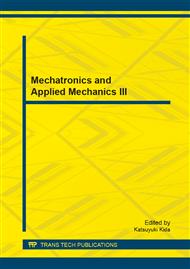[1]
R.G. Lundgren. High velocity penetrators. Monterey: American Institute of Aeronautics and Astronautics Missile Sciences, (1994).
Google Scholar
[2]
Laurent. Space Planes and Hypersonic Systems and Technologies[J]. AIAA, 2002-5426.
Google Scholar
[3]
J.R. Klepaczko. Experimental investigation of adiabatic shear banding at different impact velocities, A308352 [ R]. France: Metz U niversity, (1991).
DOI: 10.21236/ada237901
Google Scholar
[4]
D.M. Jerome , R.T. Tynon, L.L. Wilson, et al. Experimental observations of the stability and survivability of ogive-nosed, high strength steel alloy projectiles in cementious materials at striking.
Google Scholar
[5]
S.A. Silling, M.J. Forrestal. Mass loss from abrasion on ogive-nose steel projectiles that penetrate concrete targets[J]. Lnternational Journal of lmpact Engineering, 2007, 34 (11): 1814-1820.
DOI: 10.1016/j.ijimpeng.2006.10.008
Google Scholar
[6]
M.J. Forrestal, D.B. Longcope, F.R. Norwood. A model to estimate forces on conical penetrators into dry porous rock [J]. Journal of Applied Mechanics, 1981, 48 (1) : 25-29.
DOI: 10.1115/1.3157587
Google Scholar
[7]
S.E. Jone, J.C. Foster, O.A. Toness, et al. An estimate for mass loss from high velocity steel penetrators[C]. Proceedings of the ASME PVP-435 Conference on Thermal-Hydraulic Problems, Sloshing Phenomena, and Extreme Loads on Structures, New York: ASME, 2002, 422: 227-237.
DOI: 10.1115/pvp2002-1149
Google Scholar
[8]
R.N. Davis, A.M. Neely, S.E. Jones. Mass loss and blunting during high-speed penetration [J]. Journal of Mechanical Engineering Science, 2004, 218(9) : 1053 -1062.
DOI: 10.1243/0954406041991189
Google Scholar
[9]
B. Banerjee, 2005. Simulation of impact and fragmentation with the mate-rial point method. In: Proc. 11th International Conference on Fracture. Turin, Italy.
Google Scholar
[10]
B. Banerjee, 2005. Validation of UINTAH: Taylor impact and plasticity models. In: Proc. 2005 Joint ASME/ASCE/SES Conference on Mechanics and Materials (McMat 2005). Baton Rouge, LA.
Google Scholar
[11]
I. Polyzois, Finite Element Modeling of the Behavior of Armor Materials Under High Strain Rates and Large Strains, The University of Manitoba in partial fulfillment of the requirements of the degree of Master of Science, (2010).
Google Scholar


